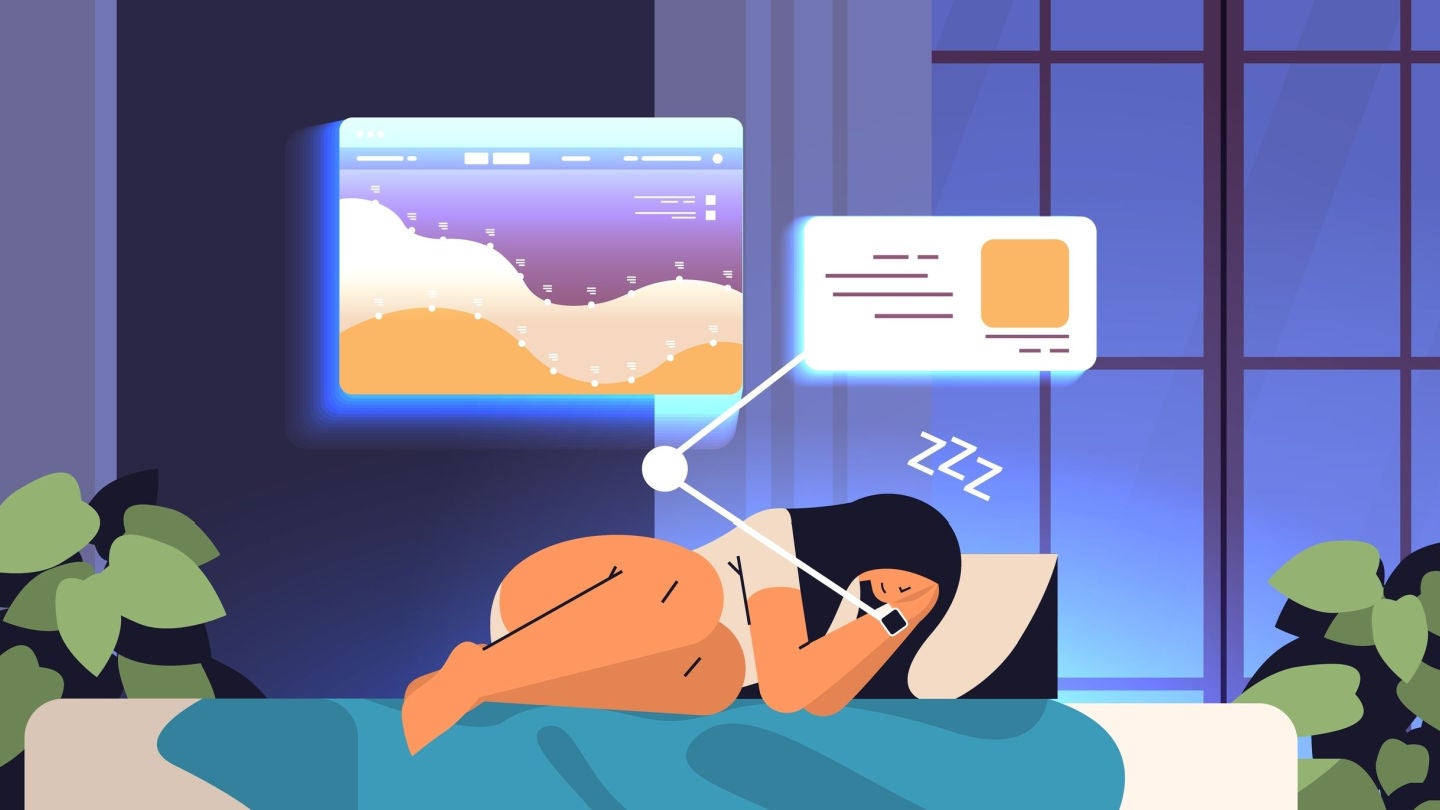
Since the dawn of the industrial age, technology’s connection to, and influence on our sleep has been consistent.
A study from 2008 revealed that overall, 12% of people dream entirely in black and white, however, this number increases to over 25% when accessing people over 55. The same study in 1940 showed that three-quarters of all Americans reported “rarely” or “never” seeing any colour in their dreams. This study concludes that dreaming in black and white was influenced by black and white television and that those with limited access to colour television found their dreams to be achromatic.
Negative relationship to sleep
Thomas Edison, the prolific inventor and father of many technological advancements was famously opposed to a good night’s sleep. Voicing his aversion in an 1889 interview in Scientific American, he said that sleep was a waste of time and that he never slept more than four hours a night.
The link between technology and a lack of sleep is still alive and well today. It is common knowledge that looking at a screen in the hour before going to sleep can have a detrimental impact on your ability to get to sleep and the quality of your sleep. This is due to the stimulating effect of technology keeping your brain firing on all cylinders, and the glow of a screen in the dark room reducing the body’s production of melatonin, a hormone responsible for helping the body attain a circadian rhythm.
A positive relationship to sleep
Technology is also increasingly being used to try and improve the length and quality of our sleep. With the explosion of wearables in the past few years, people are increasingly using smartwatches and apps to record and analyze sleep. This market will continue to grow, as a good night’s sleep is so highly valued by our current society. Researchers from MIT have even developed ‘dream shaping tech’, which they claim can manipulate dreams using a sleep-tracking device and an app to confront or avoid sources of trauma and to boost creativity.
If technology is so influential on our sleep, why do our dreams not feature mobile phones?
After a meme highlighting that mobile phones often do not appear in dreams went viral some researchers investigated the phenomenon. They believe that dreams are usually connected to survival instincts, and can serve us by playing out undesirable scenarios ahead of time so that our brain can be prepared in case a similar scenario arises. The researchers believe that technology like mobile phones has not been around for long enough to be engrained into our subconscious, instinctive, anthropological brain. Although many use their phones for hours every day, a study revealed that only 3.5 percent of women and 2.6% of men see mobile phones in their dreams. It will be interesting to see decades down the line if they appear more frequently in dreams and how they are depicted.
How well do you really know your competitors?
Access the most comprehensive Company Profiles on the market, powered by GlobalData. Save hours of research. Gain competitive edge.

Thank you!
Your download email will arrive shortly
Not ready to buy yet? Download a free sample
We are confident about the unique quality of our Company Profiles. However, we want you to make the most beneficial decision for your business, so we offer a free sample that you can download by submitting the below form
By GlobalDataIf technology has always affected and influenced our sleeping habits, how will future developments like advancements in AI or the metaverse affect us? For now, concepts such as the use of tech to enter each other’s dreams are still restricted to science-fiction films like the 2010 film ‘Inception’ or ‘Dreamscape’ (1984). However, there are some developments on the horizon that do not seem out of place in a science fiction film.
An AI can dream
In 2016 it was reported that Google’s DeepMind had given its AI ‘dreams’ to enhance its learning capabilities. This was accomplished by imbuing technology with attributes that function in a similar way to how animals are thought to dream. As a result, DeepMind’s new system, named the ‘Unsupervised Reinforcement and Auxiliary Learning’ agent (Unreal), learned to master a three-dimensional maze game called ‘Labyrinth’ ten times faster than the current fastest algorithm.
Although this is a loose definition of the term ‘dream’ it is an important part of analysis in terms of the future of AI. Although still a distant prospect, as we get ever closer to artificial general intelligence (AGI) we must analyse machines for these types of abilities. Dreams can be considered a key component of what makes us human, so if AI manages to replicate this, surely it is a sign that the disparity between technology and humankind is becoming increasingly indistinguishable…




